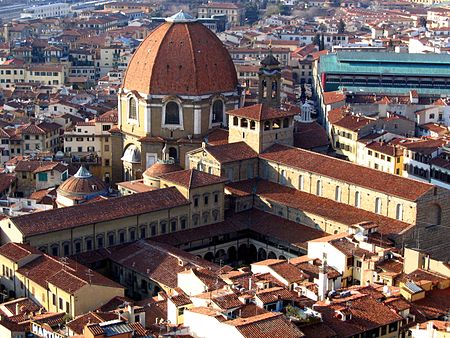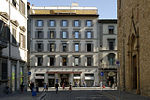Laurentian Library

The Laurentian Library (Biblioteca Medicea Laurenziana or BML) is a historic library in Florence, Italy, containing more than 11,000 manuscripts and 4,500 early printed books. Built in a cloister of the Medicean Basilica di San Lorenzo di Firenze under the patronage of the Medici pope Clement VII, the library was built to emphasize that the Medici were no longer just merchants but members of intelligent and ecclesiastical society. It contains the manuscripts and books belonging to the private library of the Medici family. The library building is renowned for its architecture that was designed by Michelangelo and is an example of Mannerism.All of the book-bound manuscripts in the library are identified in its Codex Laurentianus. The library conserves the Nahuatl Florentine Codex, the Rabula Gospels, the Codex Amiatinus, the Squarcialupi Codex, and the fragmentary Erinna papyrus that contains poems by the putative friend of Sappho.
Excerpt from the Wikipedia article Laurentian Library (License: CC BY-SA 3.0, Authors, Images).Laurentian Library
Piazza San Lorenzo, Florence Quartiere 1
Geographical coordinates (GPS) Address Nearby Places Show on map
Geographical coordinates (GPS)
| Latitude | Longitude |
|---|---|
| N 43.774521 ° | E 11.253374 ° |
Address
Basilica di San Lorenzo
Piazza San Lorenzo
50123 Florence, Quartiere 1
Tuscany, Italy
Open on Google Maps











